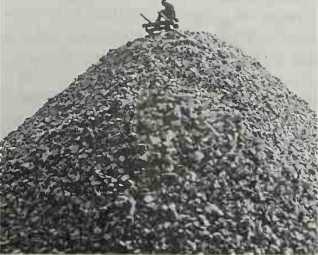Ben-Gurion, David (1886-1973). Israel’s first prime minister (194853, 1955-63). See arab-israeli WARS.
Bennett, Air Vice-Marshal Donald Clifford Tyndall (191086). Br. Air Officer Commanding Pathfinder Force, Bomber Command 1942-45. Australian by birth, Bennett was one of the greatest experts in and exponents of the art of airmanship. He came into conflict with Cochrane over the latter’s belief in low-level visual marking and resolutely adhered to his own in high-level radar-assisted marking. ANF.
Bennett, Lt Gen Henry Gordon
(1887-1962). Australian. A competent junior commander in World War I, the blustering and belligerent Bennett proved unsuited to high command during World War II. Commanding 8th Australian Division in Malaya, 1941, Bennett was outflanked in Johore by Japanese amphibious operations and retreated to Singapore Island, where his inefficiency contributed largely to the city’s fall. Bennett himself escaped, but was given only training commands until his retirement in 1944. In 1946, a military enquiry into his escape found that he was “not justified in handing over his command”: a subsequent civilian review stated that his mistakes were attributable to bad judgment, rather than lack of courage or patriotism. RO’N.
Berchtesgaden (Berghof). Hitler’s private residence in Bavaria, sometimes used as a location for conferences. It was destroyed by Allied bombing in 1945.
Beresford-Peirse, Lt Gen Sir Noel (1887—1953). Br. Commander 4th Indian Division at the Battle of Sidi Barrani in December 1940, and in Eritrea at the battles of Kassala, Agordat and Keren in January—February 1941; Commander Western Desert Force during Operations “Brevity” and “Bat-tleaxe” in May and June 1941.
Beria, Lavrenti Pavlovitch
(1899-1953). Russian. Secret policeman in Georgia 1921-38, head of nkvd 1938—53; deputy prime minister 1941; controlled partisans 1941-44; Marshal of the
Soviet Union 1945; deposed and arrested shortly after Stalin’s death; executed for supposed treason.
Berlin airlift see Berlin, blockade OF (1948 — 49).

Devastation by bombing, Berlin, 1945
Berlin, Battle of. The British night bombing of Germany from November 18 1943 until the end of March 1944 when 9,111 bomber sorties were sent against Berlin in 16 major attacks and another 11,113 against other towns throughout Germany to spread the damage and the German air defences. Numerous minor harassing attacks were also made. From the 35 major attacks, 1,047 bombers failed to return (492 of them from attacks on Berlin itself) and another 1,682 were damaged. During this time, the average number of bombers daily available for operations was only 892.
Although terrible damage was done to Berlin, it continued to function as a capital city and Germany as a formidable fighting nation. Bomber Command, although badly mauled, also remained in being and was, in fact, on the eve of much greater successes. The outcome of the battle must therefore be taken as inconclusive.
The principal reason for the disappointment of Harris’s hopes was the effectiveness of the German air defences. The very long range of Berlin gave the German night fighter force extra opportunity for interception and the intense flak barrage at the target made it impossible to attain the concentration of bombing needed to cause a catastrophe on the Hamburg or Dresden scale. In addition, the German fire, rescue and repair services worked with remarkable efficiency and resilience. Finally, apart from one attack in March after their long-range fighters had come into action, the US Eighth Air Force was unable to come in on the battle as Harris had hoped. ANF.
Berlin, Battle for (1945). The final battle for Berlin began on April 16 1945 when Marshal Zhukov’s 1st Belorussian Front and Marshal Koniev’s 1st Ukrainian Front launched a massive offensive. Although their forces amounted to
2,500,000 men, supported by commensurate numbers of tanks, artillery and aircraft, they failed to make an immediate breakthrough. Despite a devastating bombardment carried out by artillery so densely arrayed that there was one gun every 13ft (4m) of the line, the German defenders stubbornly limited the Soviet advance to relatively small bridgeheads. However, the sheer weight of arms of the Red Army, coupled with the inspirational drive of its rival commanders, forced the defenders back from the Oder-Neisse line. On April 25 units of Zhukov’s and Koniev’s forces linked up to the west of Berlin, completing the city’s encirclement. Desultory German attempts were made to reestablish contact with the beleaguered Berlin pocket but they could not break the Soviet stranglehold. The battle thereafter developed into a slow and bloody struggle through the city’s battered streets. Elements of Chuikov’s Eighth Guards Army had entered the southeastern suburbs on April 21 but it was more than a week before the centre of Berlin fell and the two Fronts met on the Charlottenberg Chaussee. On May 2 Lt Gen Weidling formally surrendered the city together with some 500,000 defenders. Soviet casualties were about 300,000, appreciably less than the estimated 1,000,000 German losses. MS.




 World History
World History









